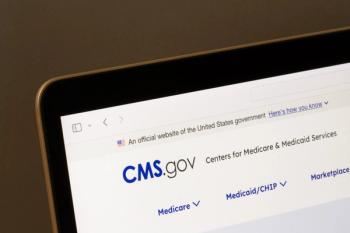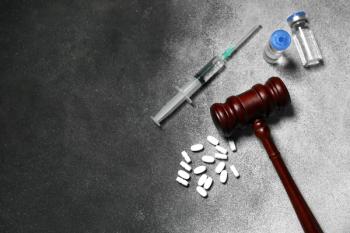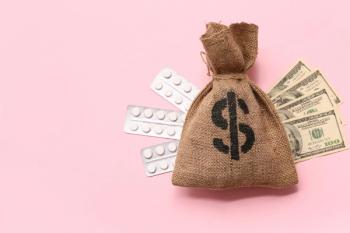
- Drug Topics September 2022
- Volume 166
- Issue 9
The Evolution of the CBD Regulatory Landscape
No federal agency has taken charge of regulating cannabidiol products, leaving decisions up to the individual states.
At best, the regulation of cannabidiol (CBD) in the United States can be described as patchwork. On a federal level, any part or constituent of Cannabis sativa plants, more commonly known as cannabis or marijuana, is a Schedule I controlled substance. Hemp—defined as Cannabis sativa containing less than 0.3% Δ-9-tetrahydrocannabinol (THC) and the basis for CBD product—was exempted from this scheduling by the Agriculture Improvement Act of 2018 (Farm Bill).1
Enactment of the Farm Bill removed hemp from Schedule I of the Controlled Substances Act and launched a surge in hemp growing and a boom in the production of CBD products derived from now-legal hemp—and created confusion for regulators and pharmacists.
“I checked the landscape legally before I got involved,” said Tim Kotschwar, PharmD, owner of Alliance Community Pharmacy in Alliance, Nebraska. “I talked with the local police chief, the state patrol, our prosecuting attorney, even a local judge. I was basically told it’s not officially legal in Nebraska, but you can buy CBD in Bed, Bath & Beyond or just about any gas station.
“I was still nervous, so I talked with the state board of pharmacy and the Nebraska Pharmacists Association. They all said it’s not officially legal yet, but it belongs in the pharmacy. That guy in the gas station isn’t going to be able to talk about the long list of CBD-drug interactions or [adverse] effect profiles,” Kotschwar continued. “The FDA says we can’t call OTC CBD a drug, but pharmacists are the people trained to...counsel buyers about the drug-like qualities of CBD.”
Federal Inaction
The text of the Farm Bill set the upper allowable limit of THC in hemp as less than 0.3% by dry weight of plant material but said nothing about THC or other constituents in products derived from hemp products, including CBD. The bill also underlined the authority of the FDA to regulate hemp, said Al Carter, PharmD, MS, RPh, executive director and secretary of the National Association of Boards of Pharmacy. The problem, he explained, is that the FDA is largely avoiding CBD regulation outside the 2018 approval of cannabidiol (Epidiolex) for certain seizures.2
The agency bans CBD claims for the diagnosis, cure, mitigation, treatment, or prevention of any disease, as well as adding CBD to human or animal food products—although use in cosmetics is specifically allowed.3
“CBD was approved as an active pharmaceutical ingredient in a drug product; therefore, CBD is excluded from the definition of a dietary supplement,” Carter explained. “The law similarly does not allow sildenafil or gabapentin to be added to foods or supplements after being marketed as prescription-only drugs. A product can make the regulatory jump from being a food [or] supplement to also becoming a drug, like [omega-3-acid ethyl esters (Lovaza)], but there is no clear path to go the other way from drug to food [or] supplement.”
However, Carter added, the FDA is not entirely silent on CBD. Since 2018, the agency has issued more than 60 warning letters to companies selling CBD in violation of existing prohibitions against medical claims or additions to food or beverage products. But the agency has not acted on requests to reconsider regulations of nonprescription CBD.
A State of Confusion
“States got tired of waiting [for the FDA] and acted on their own,” said Tim Gregorius, RPh, vice president of operations for PRS Pharmacy Services in Latrobe, Pennsylvania. “Two years ago, there were maybe 20 states where CBD was still a bad word and 3 states where it was flat-out illegal. That is no longer the case.”
But individual states have taken different paths toward CBD regulation. Idaho appears to be the most restrictive, Carter said. There, CBD remans a banned, controlled substance unless it contains 0.0% THC and is derived from mature stalks, oil, or cake made from seeds or achene, or sterilized seed.4 Nebraska, like many states, allows up to 0.3% total THC as measured by dry weight of hemp, but it does not address products derived from hemp.5
Most states require retailers to obtain a license or registration to sell CBD products, Gregorius said, but these requirements vary widely. Some states focus on product content, certificates of analysis, and allowing/disallowing products from specific vendors. Other states focus on labeling with batch/lot identification, expiration dates, and QR codes linked to certificates of analysis. Ultimately, selecting and carrying products that meet these requirements are the pharmacist’s responsibility.
An Unclear Future
When—or if—federal regulation of CBD will happen is still unknown. The secretary of the US Department of Health & Human Services has the authority to bypass the usual exclusion of prescription-first products from OTC or dietary supplement regulation and initiate CBD rulemaking, explained Jane M. Wilson, director of program development for the American Herbal Products Association, but no secretary has acted.
“We see hemp as another botanical with robust regulatory frameworks at the federal level as dietary supplements and foods that can be used as the basis for regulating CBD products,” she said. “We and other industry groups have been advocating with the FDA to consider these CBD products as distinct from the pharmaceutical that has been approved.”
The absence of FDA regulation has helped spur the introduction of at least 5 bills to regulate CBD products in the US House of Representatives and Senate this year, Wilson said. One bill, HR 3617, the Marijuana Opportunity Reinvestment and Expungement Act, passed on a largely party-line vote in April 2022. Wilson and Gregorius agreed that stand-alone federal CBD legislation is unlikely to pass this year.
“We would encourage pharmacists to only stock products that comply with applicable law and recommend products based on their professional judgment,” Carter said. “This analysis should include weighing the risk vs benefits of the therapy, which is somewhat unusual for pharmacists, and needs to factor in the quality of the product and the possibility of undeclared THC or inaccurate labeling.”
For More Information
There is no single information source for cannabidiol (CBD) regulation. The Agriculture Improvement Act of 20181 regulates hemp but not finished CBD products, and the FDA has steered clear of nonprescription CBD,3 leaving regulation to the 50 states and resulting in 50 different approaches. Neither the American Pharmacists Association nor the National Association of Boards of Pharmacy track CBD regulation by state.
The National Community Pharmacists Association has information on CBD science, pharmacy-focused education, and marketing at ncpacbdsource.com, but it provides no regulatory guidance.
State pharmacy associations are the most reliable starting points for local regulation and requirements. Some state boards of pharmacy play active roles in CBD regulation while other boards are silent on CBD, leaving regulations to other agencies. Ultimately, there may be inconsistencies between state statutes, board of pharmacy rulings, federal laws or regulations, and local law enforcement priorities.
“The standing joke for years was that you could walk down the street in a certain major state smoking a joint and nobody would blink an eye, but you couldn’t buy CBD in a pharmacy, just in gas stations and grocery stores,” said Tim Gregorius, RPh, vice president of operations for PRS Pharmacy Services in Latrobe, Pennsylvania.
Some states may require—or prohibit—specific language such as “Δ-9-tetrahydrocannabinol (THC)-free” or “low THC.” These requirements, however, may not match the diverse terminology used in the description, marketing, and labeling of CBD products as understood by consumers, retail channels, or pharmacy.
Potency, for example, is a measure of biological activity in pharmacy and federal drug regulation but is often used in CBD labeling describe the amount of CBD or some other constituent(s), an attribute pharmacists know as strength. The American Herbal Products Association’s Hemp Lexicon6 is a useful guide to current industry terminology.
References
1. Agriculture Improvement Act of 2018, PubL115-335 (Farm Bill). Accessed August 18, 2022.
2. FDA approves first drug comprised of an active ingredient derived from marijuana to treat rare, severe forms of epilepsy. News release. FDA. June 25, 2018. Accessed August 15, 2022.
3. FDA regulation of cannabis and cannabis-derived products, including cannabidiol (CBD). Updated January 22, 2021. Accessed August 15, 2022.
4. Cannabidiol(CBD). Idaho Office of Drug Policy. Accessed August 15, 2022.
5. Nebraska Hemp Farming Act, Laws 2019, LB657, §1. Accessed August 15, 2022.
6. American Herbal Products Association. Hemplexicon. Updated May 2021. Accessed August 15, 2022.
Articles in this issue
about 3 years ago
Tips for Managing Diabetes Comorbiditiesabout 3 years ago
Women and CBD: Increased Interest, but Caution Is Warrantedabout 3 years ago
Mitigating Costs of Cancer Treatment: The Role of Pharmacistsabout 3 years ago
Counseling Pearls for CBDabout 3 years ago
Drug Testing Challenges Emerge With CBD Product Useabout 3 years ago
Waste Problem Shows COVID-19 Vaccines Aren’t Just a Dime a Dozenabout 3 years ago
CBD Products: What Pharmacists Need to Knowabout 3 years ago
FDA Approves Voquezna for Helicobacter pylori Infection in AdultsNewsletter
Pharmacy practice is always changing. Stay ahead of the curve with the Drug Topics newsletter and get the latest drug information, industry trends, and patient care tips.





















































































































































